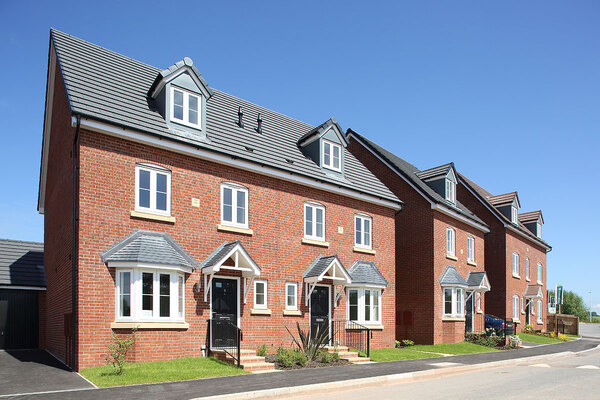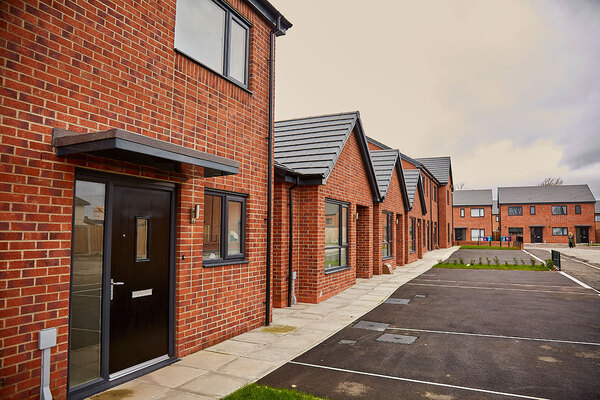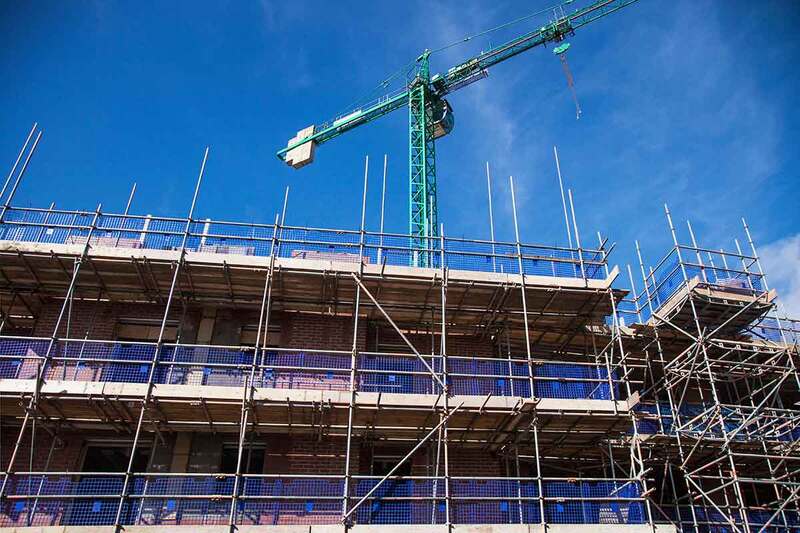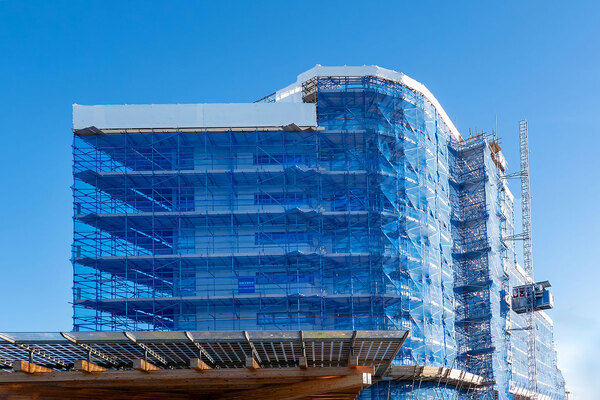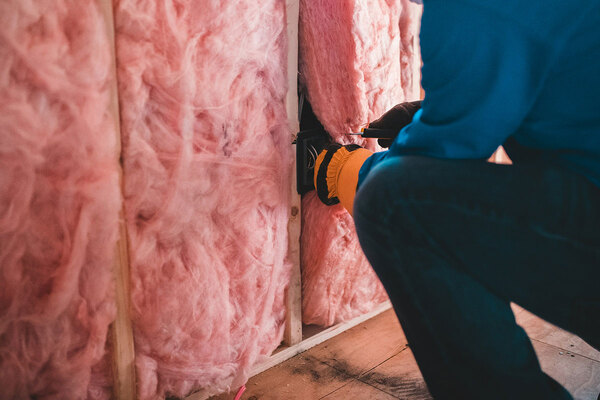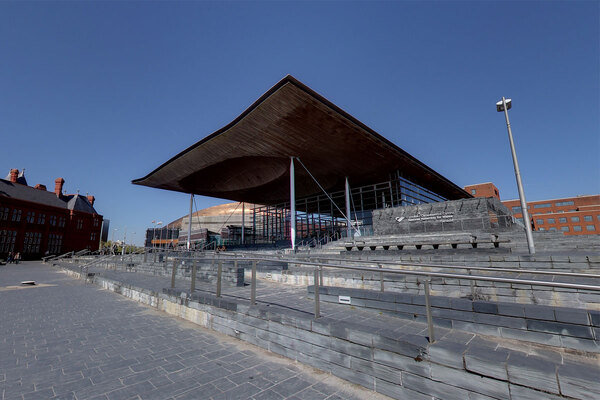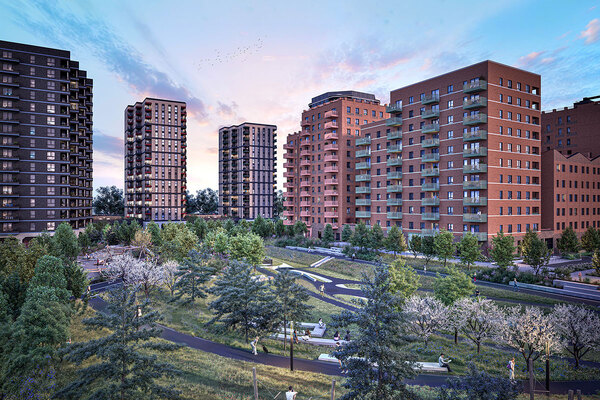What is really happening with Section 106?
As developers raise the alarm about fewer social landlords buying Section 106 properties, Inside Housing’s exclusive data reveals how much affordable housing is delivered this way – and how much is in the pipeline. Jenny Messenger reports. Illustration by Melvin Galapon
On a Tuesday morning in early July, the London Assembly’s planning and regeneration committee heard Syreeta Robinson-Gayle, head of affordable housing at Barratt London, explain the dire state of residential development in the capital.
The Section 106 system is “creaking at the seams”, she said. This planning requirement means that developers must include a percentage of affordable housing in private developments. But, Ms Robinson-Gayle said, registered providers do not have the capacity to buy the Section 106 homes in the pipeline, and if nothing changes, homes will soon be hurtling towards completions with few takers.
“I suspect it’s going to overtake us if we’re not very careful,” she told the committee, adding that it had the potential “to act as a collar on development”.
What Ms Robinson-Gayle said was probably not new to many in the housing sector, but it is an issue developers have spoken about more publicly recently.
David O’Leary, an executive director at the Home Builders Federation, tells Inside Housing he estimates that the reduced appetite of housing associations “is holding up the delivery of tens of thousands of new affordable homes and homes for sale. The dearth of interested parties means that smaller sites are not starting at all and delivery on larger sites is slowing or stopping.”
But what is really going on? To find out, Inside Housing has dug into our detailed and exclusive data on housing association development, and spoken to development directors from some of the biggest players.
So far, the slump in Section 106 take-up is yet to materialise fully in the statistics, but our data suggests that a gap in the development pipeline is coming.
Our Biggest Builders survey, where we sent detailed development questions to the 161 largest housing associations in the UK, found that the number of Section 106 homes they bought has not dropped dramatically over the past year. The top 50 builders told us 42.3% of their homes were delivered via Section 106, broadly the same as the previous year. This is a little below the most recent data available from the Ministry of Housing, Communities and Local Government on the proportion of affordable housing built through Section 106.
But these numbers only look backwards. If we take the pipeline figures from our data and look ahead to 2024-25, the picture shifts.
Among the top 10 housing associations that built the most homes in 2023-24, Section 106 homes in the pipeline represent just 30.4% of the total. The story is similar for the top 50, with just 29.4% of these housing associations’ pipelines coming from Section 106. Many of the country’s largest developing housing associations forecast that they will reduce their Section 106 proportion significantly in 2024-25 (see chart, below).
“Generally, Section 106 isn’t proving to be the best result for our customers in terms of quality or timeliness of delivery”
Riverside increased its number of Section 106 homes from 334 in 2022-23 to 872 last year. But a spokesperson for the landlord says the increase was driven by three large development projects that had already been signed in previous years, with one scheme accounting for more than a third of these homes.
“We are not bidding at the moment,” the spokesperson says.
Riverside’s pipeline stands to dip down to 300 Section 106 homes next year.
A Notting Hill Genesis spokesperson says that its current new build programme includes Section 106 agreements for around 600 new homes over the next five years, fewer than half the number it secured over the past five years.
The price of borrowing, rocketing construction costs and the need for providers to invest in their existing stock have led to “the depth of the market contracting by roughly 50% compared with two to three years ago”, says Dan Kehoe, director of development at Savills Affordable Housing Consultancy.
How has it come to this, when the UK so desperately needs more housing? Why are social landlords turning down the chance to bid on affordable homes?
Brought in to help local authorities capture, for public benefit, the uplift in land value triggered by development, Section 106 of the Town and Country Planning Act 1990 has been the single largest method of delivering affordable homes since 2015, according to Savills.
The relationship between housing associations, which buy the affordable housing, and developers – which own the land, design the houses and build them as part of the agreement – has fluctuated over the years.
Many issues with Section 106 homes are not new. Over the past few years, large developing housing associations have become vocally less keen on buying homes this way, as opposed to buying land and developing it themselves, citing the lack of control over design and specification, poorer-quality homes being provided for affordable housing tenants, and the inequity between services for social tenants and those for private residents.
But now, across the board, money and the lack of it comes up over and over again. One issue is that Homes England and Greater London Authority grant funding cannot be used for most Section 106 properties.
While this has been the case for some time, it is now putting more housing associations off as cash gets tighter.
Tristan Samuels, group development and new business director at Vivid, says buying Section 106 homes is “fundamentally more expensive as we can’t put grant into it”. Developers are also charging too much for the properties, he adds. As a result, Vivid is slashing its use of Section 106. It is down from almost two-thirds this year to a projected 39% next year.
At Nottingham Community Housing Association (NCHA), Allan Fisher, director of development and sustainability, explains that while Section 106 homes tend to be cheaper than building its own homes through land-led developments, NCHA opted to focus on its grant-funded strategic partnership with Homes England when inflation rose and it was forced to be pickier.
A quarter of NCHA’s new homes in 2022-23 were Section 106, falling to 10.4% in 2023-24 even though overall completions more than doubled. Next year, its pipeline for new homes is forecast to stay consistent, but fewer than 4% of the homes will be Section 106.
This is unlikely to change, Mr Fisher says, unless the government provides extra funding to build capacity for other costs, such as improvement works. “Then we could get back into the Section 106 market,” he says, but currently, this would be at the expense of the strategic partnership programme, a trade-off NCHA is not prepared to make.
Quality problems
Since the Grenfell Tower fire, since Awaab’s Law and since the climate crisis intensified, several new non-negotiables have emerged: building safety standards for high-rise blocks, an emphasis on repairs and maintenance, and energy efficiency. This tissue of regulatory changes, with a greater focus on residents, is now showing up at the level of contracts and planning.
“I think the only thing on quality that has particularly changed over the last few years is people’s view in terms of the evolving legislation,” says Chatinder Bal, director of land, planning and partnerships at Metropolitan Thames Valley Housing (MTVH).
Some developers have not been able to build to the safety standards MTVH needs. “In our view, there’s actually more information required on all properties, regardless of size, when it comes to fire safety – photographic evidence and so on,” Mr Bal says.
Richard Cook, group director of development at Clarion, adds that some Section 106 homes are still being developed with single staircases, despite the change in legislation. “If anyone wants to procure these assets, the price will be significantly compromised,” he says.
On those grounds, those that do not need to take Section 106 homes in high-rise buildings will not do so.
“We have been offered seven [and] eight-storey 106s and we’ve said no, because it just adds another side for the asset team to manage,” says Andrew Royall, director of development at Hightown Housing Association.
Once Section 106 homes are built, the contractual agreements underpinning them will shape the lives of the residents who will later live there.
The terms of the contract can determine how quickly repairs are carried out, for instance. Retention clauses, which detail an amount of money to be held back to cover the 12-month defect period, tend not to appear in Section 106 contracts.
“We had a maladministration not so long ago, where the ombudsman found that we hadn’t repaired something fast enough. We’ve had to pay compensation to a tenant. The reality is that we are chasing the developer,” says Vivid’s Mr Samuels.
No one Inside Housing spoke to had sworn off buying Section 106 properties in future, but every development director said they were being choosier to make sure the homes were right.
“Generally, Section 106 isn’t proving to be the best result for our customers in terms of quality or timeliness of delivery. Some time ago, we started to move to a land-led strategy,” says Gerraint Oakley, executive director for growth and development at Platform Housing Group.
Development directors echo his view, with little in a Section 106 contract to help them out. L&Q has been burned in the past with timescales, says Vicky Savage, group director of development and sales, with some developers halting projects early or, conversely, rushing homes out. “Sometimes our contractual position has not been as strong as it should have been,” she says.
While for-profit providers might provide some extra capacity, the consensus is that it will not be enough.
At the London Assembly meeting, Ms Robinson-Gayle flagged up a Southwark development by Barratt which had struggled to find buyers for 100 affordable homes. This is the Bermondsey Heights site, a 163-home development on a parcel of land that hugs Millwall Football Club.
Since the meeting, the homes are no longer going spare and are on course to be snapped up by Legal & General Affordable Homes (LGAH). But a spokesperson for LGAH says that it too is now focusing on delivering “more homes directly ourselves – giving us control over the design and quality”.
Several development directors also tell Inside Housing that Section 106 designs may not be up to the highest standards of energy efficiency.
“One developer remarked at an event two years ago that installing air source heat pumps would cost an extra £10,000 per home compared with gas boilers, so they would continue to install gas boilers for now,” Steven Morrice, group development and sales director at Hyde, recalls.
Russell Drury, head of land, new business and partnerships at Moat Homes, holds a similar view. “We are quite ambitious in terms of our sustainability criteria, and that has meant that some Section 106s probably aren’t for us on those grounds.”
Housing associations are becoming choosier about what Section 106 homes they will add, so the question is: will private developers respond?
L&Q’s Ms Savage sums up the sentiment of many development directors: early dialogue with housing associations. “That’s our ask to the developers – just come and talk to us,” she says.
Recent longform articles by Jenny Messenger
Waqar Ahmed: the sector-disruptor who has helped L&Q grow
After more than three decades in housing, the ambitious finance director who drove some of the sector’s biggest mergers is retiring. He tells Jenny Messenger about his long list of financial firsts
Inside Housing visits one of the first landlords to win a C1 rating
Salford-based Salix Homes managed to get a top consumer rating from the English regulator despite facing significant challenges, including 20 high-rise buildings and mounting reports of repairs. Jenny Messenger visits to find out how Salix achieved its C1 grade
What is really happening with Section 106?
As developers raise the alarm about fewer social landlords buying Section 106 properties, Inside Housing’s exclusive data reveals how much affordable housing is delivered this way – and how much is in the pipeline. Jenny Messenger reports
In detail: what the NPPF changes mean for housing delivery
With the redrafted National Planning Policy Framework out for an eight-week consultation, James Riding and Jenny Messenger analyse the implications of a document that seeks to encourage large-scale housebuilding and reverse many of the previous government’s policies
Sign up for our development and finance newsletter
Already have an account? Click here to manage your newsletters

